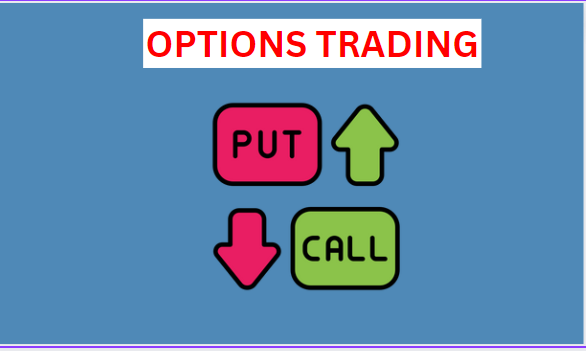In the world of finance, where possibilities are abundant, options trading stands out as an intriguing and versatile investment strategy. In this blog, we’ll explore the basics of options trading, including its types, benefits, and risks. Let’s get started!
The most common bad habit I have seen in traders — good and bad ones — is the inability to react correctly to market action. – Larry Williams
List of contents
- What is options trading?
- Types of options
- Important terminology in options trading
- Strategies in options trading
- Advantages of options trading
- Disadvantages of options trading
- Conclusion
Read also: What is commodity trading?
What is options trading?
Options are financial contracts that give the holder the right, but not the obligation, to buy or sell an underlying asset at a predetermined price within a specific timeframe. The buyer pays a premium to the seller for this privilege. The underlying asset can include stocks, commodities, indexes, or even currencies.
In simpler terms, an option is a contract that allows an investor to buy or sell a specific underlying instrument, such as a stock or an index.
The person who buys an options contract is called the option buyer, while the person who sells it is referred to as the option seller or option writer.
Types of options
There are two primary types of options trading: call options and put options.
- Call options: A call option gives the holder the right to buy an underlying asset at a predetermined price (strike price) within a specific time period. Call options are often used when investors expect the price of an asset to go up. Call options are abbreviated as ‘CE’.
- Put options: A put option gives the owner the choice to sell a specific asset at a prearranged price (called the strike price) within a certain time frame (before the expiration date). In exchange for this option, the owner pays a premium upfront. Put options are often used when investors expect the price of an asset to go down. Put options are abbreviated as ‘PE’.
Important terminology in options trading
As you explore options trading, it’s important to familiarise yourself with key terms that will help you understand them better. Here are a few terms you should know to get started:
- Strike price: The strike price, also known as the exercise price, is the predetermined price at which the underlying asset can be bought or sold when the option is used. It represents the specific price that the buyer of the option agrees to pay or receive when buying or selling the underlying asset.
- Premium: The cost to buy an option is known as a premium, and it is determined using the price and values of the underlying security. The premium is paid by the option buyer to the option seller for the rights provided by the option contract. Premiums can change based on whether the option is in-the-money or out-of-the-money.
- Expiration date: The expiration date is the final date by which an option contract can be exercised. Once the expiration date passes, the option becomes invalid and cannot be exercised again.
- Open interest: Open interest refers to the total number of outstanding or active options contracts for a particular underlying asset. After the expiration date of a specific contract, the open interest becomes zero or comes to an end.
Strategies in option trading
Here are the names of some common options trading strategies:
- Long call
- Short call
- Long put
- Covered call
- Protective put
- Bull call spread
- Bull put spread
- Bear call spread
- Bear put spread
- Long straddle
- Short straddle
- Long strangle
- Short straddle
- Iron condor
- Iron butterfly
- Collar strategy
- Call ratio back spread
- Bear call ladder
- Married put
Advantages of options trading
Here are some of the key advantages.
- Leverage: When trading options, traders only need to pay the premium amount, not the entire transaction value. This leverage can increase the potential profits compared to investing directly in the asset.
- Hedging: Options can be used as a way to manage risks and protect against potential losses in an investment portfolio. Traders can use options contracts to safeguard their positions from negative changes in the market.
- Low capital: Unlike buying or selling stocks, options usually require less initial investment. This enables traders to enter the market with less capital and have the potential to earn higher returns on their investment.
Disadvantages of options trading
- Risk of loss: Options trading involves the risk of losing the entire premium paid for the options contract.
- Volatility risk: Options prices are influenced by changes in market volatility. Sharp and unexpected price movements can impact the value of options, potentially leading to increased risk or reduced profitability Market Volatility: Options can be sensitive to changes in market volatility.
To open zerodha account :- Click here
Read also: What is future trading?
Conclusion
options trading can be an exciting and potentially rewarding way to invest your money. By learning the basics, understanding the risks, and using smart strategies, you can make the most of options trading and possibly earn more money. Just remember, it takes discipline, continuous learning, and careful decision-making. If you approach it the right way, It can be a great addition to your investment journey.
Happy trading!
I hope you enjoyed reading this. Please share it with other and do comment!
Read also: What is intraday trading?

